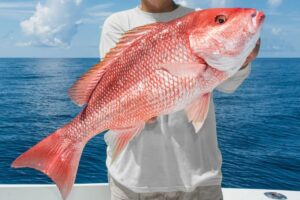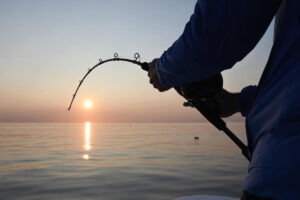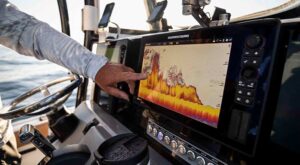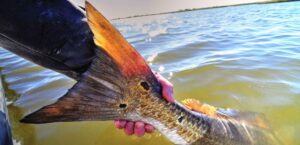Few saltwater gamefish inspire the passion and pursuit that striped bass do. Known for their aggressive strikes, hard fights, and seasonal migrations, stripers offer exciting opportunities for both shore and boat anglers up and down the Atlantic coast. Whether you’re a seasoned fisherman or just getting started, this guide will help you dial in on the tactics, gear, and strategies needed to successfully target striped bass.
1. Know the Seasonal Patterns
Striped bass are migratory fish. Understanding their seasonal behavior is key to locating them:
- Spring (April–June): Stripers move north from overwintering grounds, entering estuaries and rivers to spawn. This is a prime time to catch them in shallow water.
- Summer (July–August): Bigger bass may move deeper or head offshore to cooler waters, while schoolies (smaller stripers) often stay near shorelines and inlets.
- Fall (September–November): This is the peak of the striper season. Fish feed aggressively in preparation for their southbound migration.
- Winter (December–March): Striper action slows down considerably in the Northeast but can remain steady in the Mid-Atlantic and Southeast regions.
2. Choose the Right Tackle
Striped bass can range from 12-inch schoolies to 50-pound cows, so versatile gear is essential.
- Rod & Reel: A 7–9 foot medium-heavy spinning rod paired with a 4000–6000 size saltwater reel.
- Line: 20–30 lb braided mainline with a 20–40 lb fluorocarbon leader.
- Terminal Tackle: Use strong, corrosion-resistant hardware like snap swivels and circle or J-hooks sized 3/0–7/0, depending on bait or lure.
3. Pick Your Spots
Stripers are structure-oriented fish that respond to current, depth changes, and bait availability. Some high-percentage spots include:
- Inlets and jetties
- Bridges and piers
- River mouths
- Sandbars and troughs along beaches
- Rips and current lines
- Rock piles and submerged structure (boat-only areas)
Fish during low-light hours—dawn, dusk, or nighttime—for your best shot at larger fish.
4. Lure and Bait Selection
Striped bass are opportunistic feeders, and your bait or lure choice should match the conditions and local forage.
Live Bait:
- Eels (especially effective at night)
- Bunker (menhaden)
- Mackerel
- Clams and sandworms (popular in spring)
Artificial Lures:
- Topwater: Poppers and spooks for explosive surface strikes, especially at dawn and dusk.
- Swimbaits and soft plastics: Imitate baitfish effectively in shallow or mid-depth waters.
- Jigs: Bucktail jigs tipped with soft plastics are deadly for working deeper structure.
- Plugs and Minnow Lures: Great for covering water and mimicking bait schools.
Match the size and color of your lure to the prevailing baitfish in your area.
5. Read the Water
Learning to “read the water” is an underrated but critical skill. Look for:
- Bird activity: Diving birds often indicate feeding stripers below.
- Rips and current edges: Stripers use current breaks to ambush prey.
- Nervous water or bait boils: These surface disturbances signal active feeding.
Tidal movement plays a huge role in striper behavior. Moving water usually means feeding fish—plan your outings around incoming or outgoing tides.
6. Practice Ethical Fishing
Striped bass are a prized but vulnerable resource. Practice good conservation habits:
- Follow local size and bag limits (they vary by state and season).
- Use circle hooks when fishing with bait to reduce gut-hooking.
- Handle fish carefully—wet hands, avoid dragging on sand, and release quickly if not keeping.
- Respect other anglers, keep noise down, and leave no trash behind.
7. Bonus Tip: Fish at Night
Night fishing for stripers can be incredibly productive, especially around bridges, docks, and well-lit piers. Stripers often use artificial light to ambush baitfish. Quiet presentations and slow retrieves can be the difference-maker under the stars.
Final Thoughts
Targeting striped bass is as much about understanding nature as it is about skill and tackle. When you put in the time to learn their behavior, dial in your approach, and stay persistent, you’ll be rewarded with unforgettable battles and brag-worthy catches. Whether from shore, kayak, or boat, chasing stripers is a saltwater pursuit like no other.
Tight lines—and may your next cast land a trophy!








